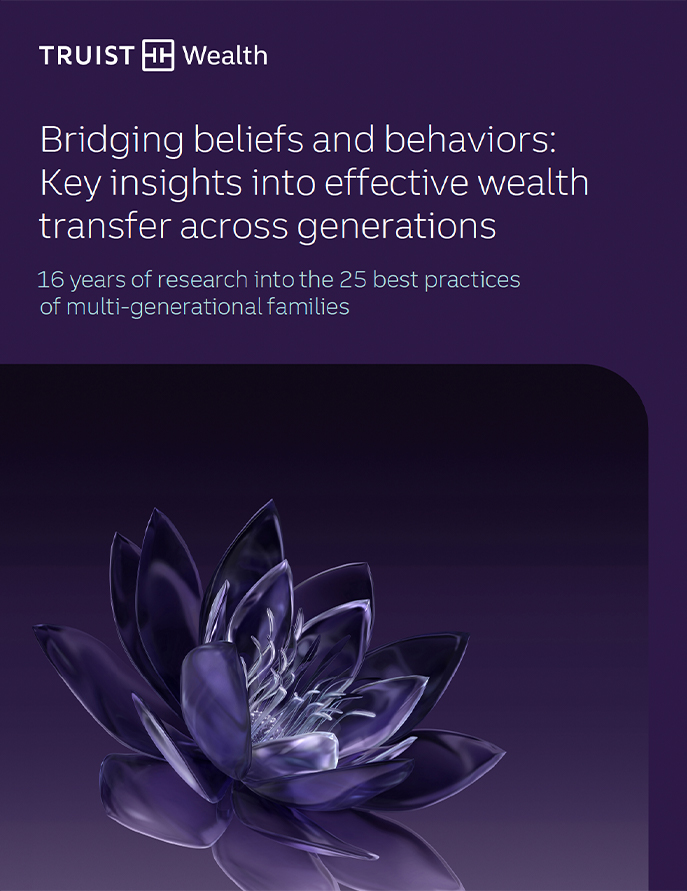
Rik Oostenbroek and the world of abstract digital art | Truist Perspectives
Lifestyle Rik Oostenbroek and the world of abstract digital art
World-renowned digital artist Rik Oostenbroek explains his process, including his work on the commissioned glasswork imagery for Truist Wealth.
World-renowned digital artist Rik Oostenbroek explains his process, including his commissioned glasswork imagery for Truist Wealth.
Creating a structure to govern real and in-kind asset acceptance
Foundations & Endowments
Gratitude Revisited - Creating a structure to govern real and in-kind asset acceptance
Every nonprofit would love nothing more than for that entire $450 billion to be in cash
In 2019, charitable giving in the U.S. climbed to $450 billion—one of the highest years on record.
8 Useful Tax Tips for Charitable Giving | Truist
Paying it forward 8 helpful tax tips for charitable givers
Giving feels good—and it’s even better when you understand how giving can benefit you come tax time.
With careful planning, charitable donations can benefit you at tax time by reducing your taxable income and—depending on the amount you give and your income—possibly get you into a lower tax bracket.


